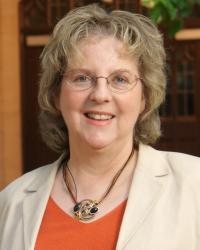
Dean
Catherine Emihovich
In my last column, I noted that I would use the theme of sustainability to frame issues and challenges facing our College of Education as we enter the 21st century. Colleges of education located in public universities face unique and special challenges to prepare educators and researchers to work in a global environment. More than ever, increased levels of education are deemed critical for coping with the economic demands of an increasingly technological driven world, and becoming productive citizens of multi-racial, multi-lingual democratic societies. Innovation, entrepreneurship, and creativity are highly prized attributes, but these characteristics are not well nurtured in teaching and learning settings modeled after 19th century industrial production concepts. In addition, the rapid changes experienced in U.S. society over the last 50 years have been particularly devastating to children and youth.
One of the more exciting possibilities for our college that has recently emerged is that we have been asked to develop a proposal for a funding group interested in renovating old buildings to meet LEED platinum standards of sustainability. The Leadership in Energy and Environmental Design (LEED) Green Building Rating System is the nationally accepted benchmark for the design, construction, and operation of high performance green buildings. Because of UF’s increasing prominence in this area, the university has been invited to submit three proposals, and one of them is the renovation of Norman Hall.
We see the renovation of Norman Hall, and the creation of a new, state-of-the-art education technology annex (to be called the Experiential Learning Complex), as enhancements that can help UF achieve several key goals as stated in the Strategic Work Plan:
- Maximize human capital by creating an environment that enables students to learn better and to acquire the technological skills needed to live and work productively in an increasingly diverse and global world.
- Enhance the quality of life by providing more sustainable work spaces that lend themselves to collaborative ventures and engage faculty and students in deeper conversations about teaching, learning, and research.
- Support new forms of professional development, especially for faculty who did not come of age in the digital era, and who need to connect to a more media-savvy generation.
- Develop the proposed Experiential Learning Complex to facilitate communication across the world.
- Provide more effective services to respond to the needs of families, schools, and communities, especially in the most economically distressed and challenged areas of the state.
- Link faculty across the college and campus in collaborative ventures to address some of the most pressing educational, health, and social problems facing society today.
The problems this renovation and new addition (which would be funded separately) would address to achieve these goals are:
- Transform current “chalk-and-talk” classrooms into a contemporary networked center, with capabilities for distance learning, global telecommunications, theater-immersion classrooms and other high-tech features.
- Reconfigure existing space, currently chopped up into small discrete rooms, by opening it up to support faculty and students engaged in a wide variety of research and engaged scholarship activities.
- Make essential repairs to bring Norman Hall up to existing building codes and satisfy requirements of the Americans with Disabilities Act.
- Redesign the heating and cooling system to prevent fires and keep faculty, students, and staff comfortable in extreme heat environments.
- Provide modern office space for faculty, students, and staff for work and dining needs.
- Provide community-friendly meeting spaces and restrooms that are completely accessible on all three floors.
- Create shared learning space with other colleges on campus to ease overcrowding (e.g., a renovated science lab can help serve the 1000+ biology majors as well as the Science for Life program and science education teacher preparation)
The union of these two efforts—renovation and technological reinforcement—will restore timeworn Norman Hall to its former aesthetic and functional glory, enabling our professors and students to continue the College’s tradition of leadership and innovation in educator preparation deep into the 21st century.
Our dreams are indeed large, but as the American author, John Updike, said, “Dreams come true. Without that possibility, nature would not incite us to have them.”
